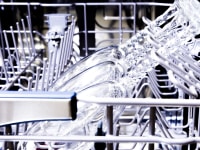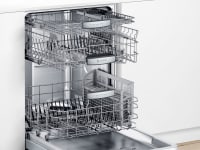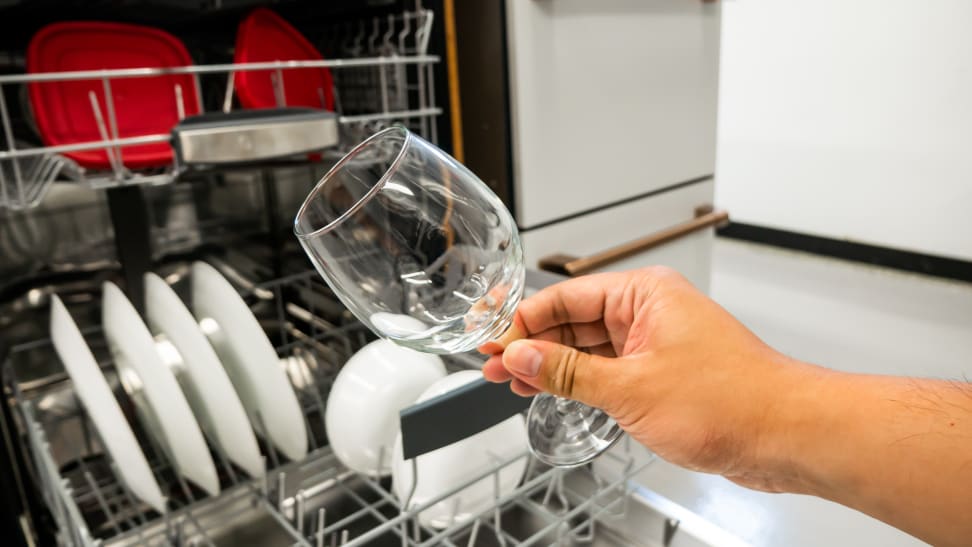 Credit:
Reviewed / Jonathan Chan
Credit:
Reviewed / Jonathan Chan
Products are chosen independently by our editors. Purchases made through our links may earn us a commission.
If you scroll through user reviews for dishwashers, one complaint will keep coming up: This dishwasher doesn't dry my dishes!
Nobody likes putting away wet dishes. Bacteria can spread, it invites mildew growth, and your cabinets can warp from the increased humidity over time.
Recently, there have been some significant changes in how different dishwashers tackle the task of drying dishes. Heating elements, which used to be a dishwasher staple, have started to fall in favor of more energy-efficient solutions.
Here, we'll quickly touch upon the most common methods dishwashers use to dry dishes, go over the pros and cons of each, and recommend the dishwashers that actually dry dishes.
The problem with wet dishes
Let's face it: While it's always an option to towel-dry, that can be incredibly time-consuming and you can't reach every nook and cranny of everything. This is definitely a task where automation is the better option.
Putting away wet dishes isn't ideal either, especially in the long term. Bacteria can proliferate on wet dishes, which can lead to food-borne illness seemingly out of nowhere. Repeatedly putting away wet dishes will raise the humidity inside your cabinets, which can lead to mildew growth or warp the wood.
If you're using your dishwasher to clean plastic toys, humidifier tanks, or teething rings, you'll definitely want to get those completely dry to avoid undoing your sanitization efforts before they're used.
Why don't new dishwashers dry like the old ones?
If you've ever shaken your fist and thought, "This new dishwasher doesn't dry like they used to," you're probably not wrong. This is one time when sounding like a grumpy old man is actually valid: Older dishwashers, on the whole, did dry dishes better.
In the past, electric heating elements were the norm. These would typically snake around the bottom of the wash tub, underneath the lower rack, and operate similarly to the heating coils on a traditional electric oven: They would essentially bake off any excess water.
The problem? Heating elements require a ton of electricity.
When the Department of Energy proposed new standards for dishwasher energy use in 2014, many manufacturers cut out these heating elements to keep their appliances in compliance.
As such, more energy-efficient drying technologies began to pop up to compete with the old way of doing things—to varying degrees of success.
Modern dishwashers now typically employ one of four different drying methods: electric heating elements (yes, these are still around), evaporation, heated air dry, and zeolite.
Four ways dishwashers dry dishes
1. Electric heating element: The energy-inefficient old guard
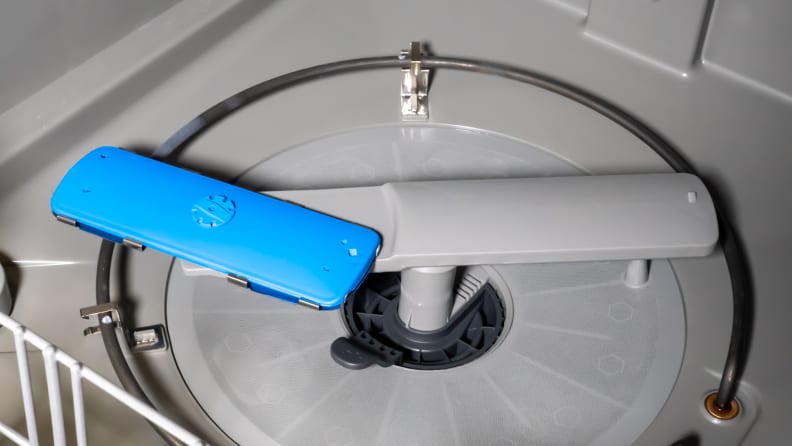
Even though it's not energy efficient, many entry-level dishwashers still use a built-in heating element.
While you won't find many Energy Star-certified dishwashers with built-in heating elements, that doesn't mean they've completely gone the way of the dinosaur: Many older units are still on the market, like the Frigidaire FGIP2468UF, and some newer models have kept the feature.
If you've ever used an electric stove or oven, you're familiar with how electric heating elements work: It's the same element in a different context.
The main pro of this method is that it works well—for most things. The obvious con of this method is its electricity requirement, which you'll definitely feel in your utility bill, but there are also less obvious ways this tactic can backfire.
The exposed heating element can present a burning risk, and it will definitely melt through any plastic item that falls through the racks or gets too close. Also, because these heating elements are almost always at the bottom, it means dishes there will get exposed to higher heat and will get much dryer than those in the middle or third rack. That's also why many items are labeled "top rack only."
Also, this system doesn't work well with plastic items. Plastic containers typically have ridges on their underside that promote the pooling of water, and the plastic can insulate that water from some of the heat, stymieing evaporation.
Also, anything plastic that slips through the racks and onto those heating elements is going to melt through and burn, filling your kitchen with potentially poisonous compounds—definitely bust out the air purifier if this happens!
2. Evaporation: The eco-friendly alternative
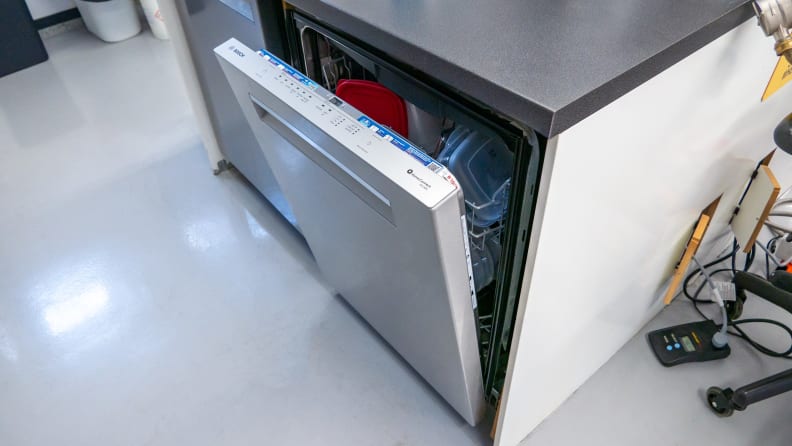
Some dishwashers, like the Bosch 500 Series SHP65CM5N, have a feature that will pop open the door automatically after a cycle finishes, allowing moisture to escape.
Evaporation is one of the most eco-friendly methods for drying your dishes, and it's relatively cheap and easy to implement.
Models like the Miele G 7566 SCVi SF and Bosch 500 Series SHP65CM5N both have features that leverage evaporation to its fullest potential.
These features typically work by using hot water, which will more readily turn into water vapor, then pop open the door of the dishwasher after a wash cycle is complete to allow all that vapor to escape.
While models that can do this automatically are the best and easiest way to leverage evaporation for dryer dishes, you can also do this manually: Just set a timer for when a wash cycle ends and manually open the door yourself. Your kitchen may get slightly steamy for a short duration, but as long as you have good ventilation you won't run into any problems.
This method simply allows evaporation to do its work more efficiently, and uses next to no additional electricity.
The downside is you may have to wait longer for dishes to dry out. Also—as with many of these drying methods—plastics can cause problems. Hot water can build up heat in ceramics and metals, which can then promote faster evaporation, but those Tupperware containers don't hold heat very well—and the lips on their undersides tend to allow water to pool.
If you have the time, though, it's definitely best to work smarter and not harder: Just let evaporation do its thing!
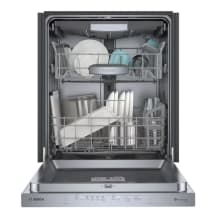
This sleek 500 series Bosch dishwasher will give your dishes a decent cleaning, and features AutoAir automatic door opening to aid drying.
3. Heated air dry: The best of the old worlds (sort of)
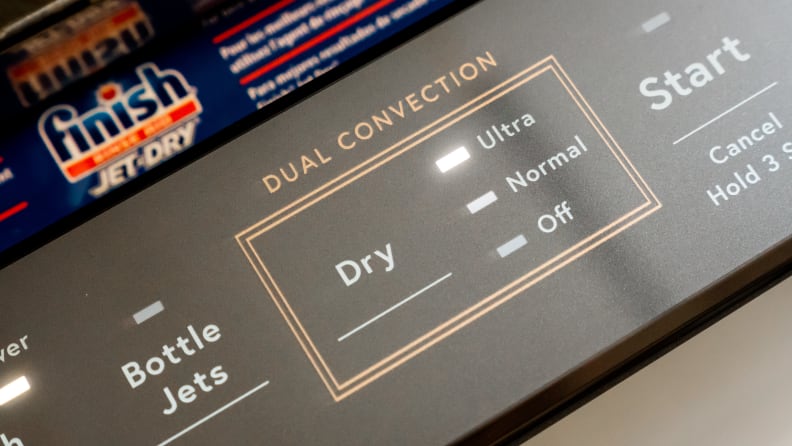
Some dishwashers use an internal heating element and a series of fans to blow dry, hot air over the dishes.
Heated air dry systems basically combine an internal heating element with a fan. The air gets heated up, and is then blown out through vents placed throughout the dishwasher. This air picks up excess humidity and is then expelled from the dishwasher.
While this system is also electricity-expensive, it's more effective than just using a heating element alone. These systems typically keep the heating element away from places you can accidentally burn yourself, which is great news for your hands and that plastic ladle that won't stay put on the upper rack.
Like traditional electronic heating element systems, however, this strategy struggles with water that pools on plastics. Some dishwashers, like the LG LDTH7972S, compensate for this by offering heated dry cycles like Dynamic Heat Dry and Dry Boost that are powerful enough to dry plastics.
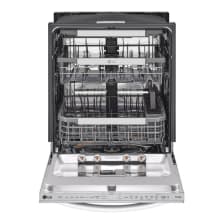
The LG LDTH7972S is a top-notch dishwasher with powerful cleaning cycles and impressive drying times with heated dry.
4. Zeolite: As close to magic as you can get
The mineral zeolite has some interesting applications in dishwashers.
When zeolite comes into contact with water, a chemical reaction occurs that produces heat. That's right: It absorbs water and uses it to make heat. None of the mineral is used up in the process, and the zeolite can be reset with a little electricity.
Not only does this sound like magic at first blush, but based on our lab testing, it performs like magic, too. Of all the drying methods we’ve tested, zeolite drying is by far the best and most effective—and it's energy efficient! To paraphrase Arthur C. Clarke, zeolite is some sufficiently advanced technology.
We first tried out this technology on the Bosch SHPM88Z75N, but the brand new Bosch 800 Series SHP78CM5N has the latest and greatest implementation of this feature.
Best of all? It actually dries plastics. And we're not just talking about the pooling water on the bottoms of containers, we're talking about drips of water that get in the crevices of lids. It doesn't matter where that water is hiding, if you're drying with zeolite, it's getting vaporized.
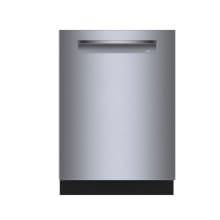
The Bosch SHP78CM5N 800 Series dishwasher is a powerful cleaning agent and features CrystalDry with zeolite for bone-dry dishes.
More on dishwashers
- The Best Affordable Dishwashers We've Tested
- The Best Dishwashers We've Tested
- It's easy to buy a dishwasher online—here's why
- The Best Dishwashers We've Tested That Dry Your Dishes
- The Best Stainless Steel Dishwashers We've Tested
- The Best Quiet Dishwashers We've Tested
- What, are you crazy? Don't put that in your dishwasher!
- The Best Countertop Dishwashers We've Tested
- What actually happens inside your dishwasher?

